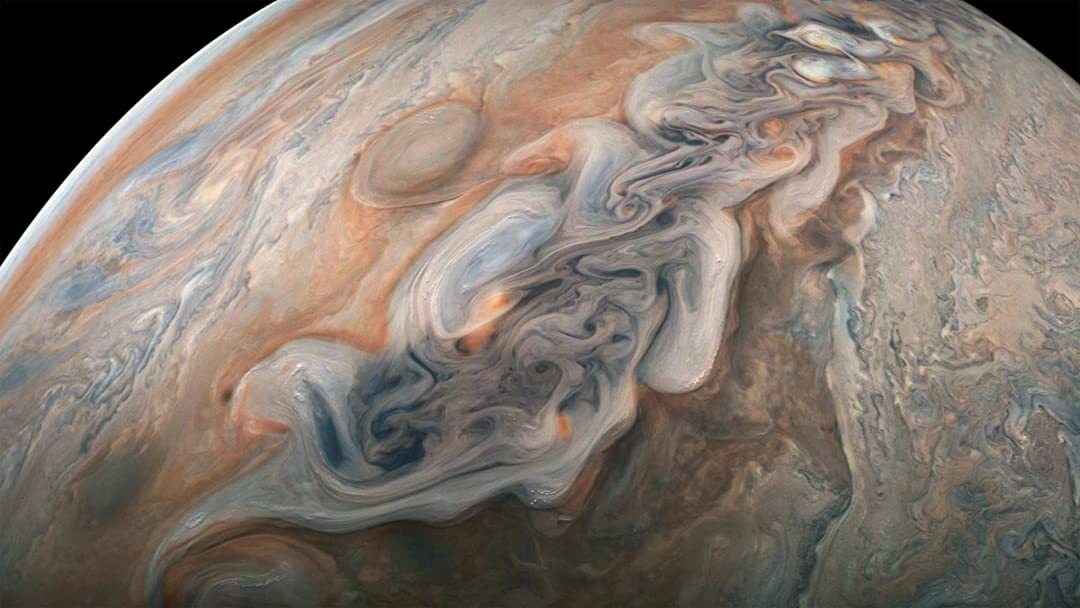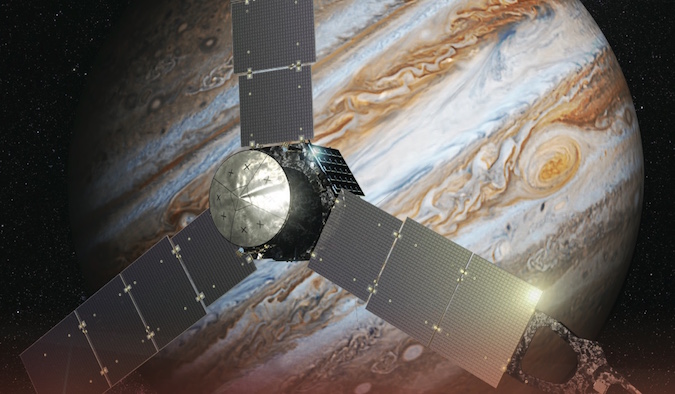Based on data from the Juno spacecraft, scientists concluded that a large mass of metal is hidden in the depths of Jupiter. It was brought there by planetesimals — the embryos of planets that the gas giant gobbled up at the beginning of history.

What Juno said about Jupiter
Scientists working with data from the Juno mission have recently published a paper on the internal structure and formation of Jupiter. The data of this spacecraft indicate numerous anomalies in its gravitational field. And this, in turn, indicates the presence of heavy objects near its core.
Previous studies of Jupiter have shown that it mainly consists of hydrogen and helium. However, Juno studies show that the deep layers of the planet contain metals in an amount equivalent to 11 to 33 Earth masses.
To explain such a high metal content, several models of the internal structure of the giant planet have been developed. Some of them concentrated on the idea that the depths of the planet are mixed. Others, on the contrary, said that at least three completely different layers could be distinguished there. However, Juno’s research has put everything in its place.

Young Jupiter “gobbled up” unborn worlds
The question of conditions in the depths of Jupiter is closely related to the question of its formation. All scientists agree that it is the oldest of the planets in the Solar system. And it originated as a rocky body, which, upon reaching a certain size, began to pull more and more gas on itself. However, there were still quite a few heavier materials around it that it continued to absorb.
The only question is whether these materials were in the form of rubble, or were they planetesimals — bodies with a diameter of hundreds and thousands of kilometers that never became planets. The option when the growth of Jupiter was fed only by small pieces now looks less likely. In the later stages of formation, a gas giant must push bodies of this size out of its orbit.
But the planetesimals had to be too big for that. After all, their interaction with Jupiter should have ended with a collision with it. And Juno’s data says it was. If the giant were saturated with metal fragments the size of rubble, they would still be carried even in the upper layers of the planet’s atmosphere, and this is not observed.
Unexpected consequences
The fact that Juno discovered numerous metals in the depths of Jupiter that do not manifest themselves on the surface in any way has great consequences for understanding giant planets in general. Previous views that their depths are a boiling cauldron where everything is mixing turned out to be wrong.
Heat flows coming from the depths of Jupiter do not greatly affect its layered structure. And it seems that this result is also true for other giant planets. And this conclusion unexpectedly affects the future results of the James Webb Space Telescope.
A powerful spectrograph of a modern astronomical instrument is planned to be used to determine the chemical composition of the atmospheres of gas giants in other star systems. But, as the experience of Juno and Jupiter has shown, such remote observations cannot give an adequate picture of what is happening in the depths of the planet.
According to www.sciencealert.com
Follow us on Twitter to get the most interesting space news in time
https://twitter.com/ust_magazine

